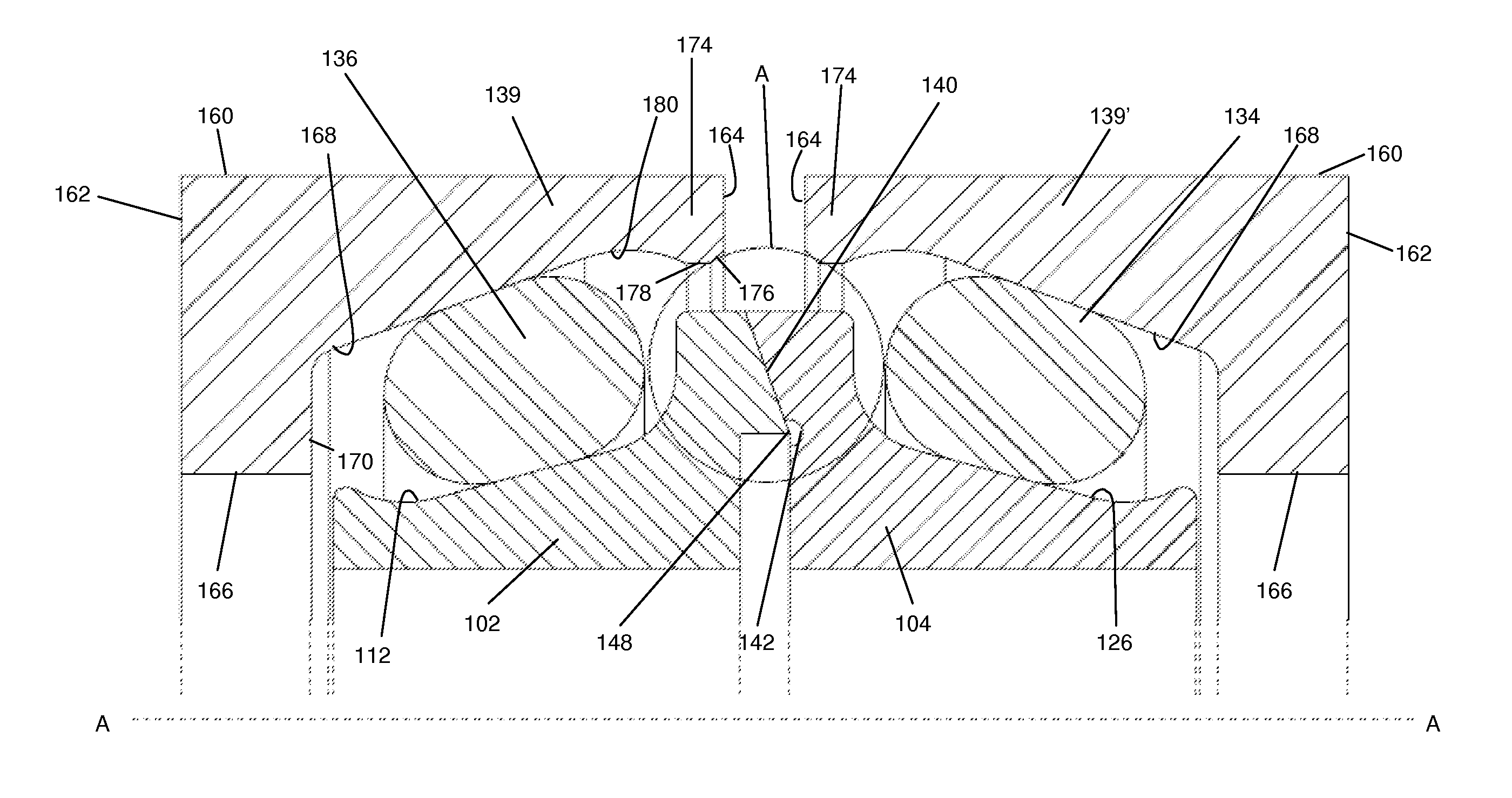Seal assembly
a technology of sealing faces and sealing faces, applied in the direction of engine seals, mechanical devices, engine components, etc., can solve the problem of inflexibility, and achieve the effect of reducing the propensity of sealing faces, preventing pumping, and reducing contact pressur
- Summary
- Abstract
- Description
- Claims
- Application Information
AI Technical Summary
Benefits of technology
Problems solved by technology
Method used
Image
Examples
first embodiment
[0044]The only difference from the first embodiment is the replacement of the tubular housing 138 with first and second separate housing components 139, 139′, which are associated with seal rings 102 and 104 respectively. Housing components 139, 139′ are identical to one another and each comprises a metal annulus having a cylindrical outer face 160, a planar, annular outer end face 162 extending perpendicularly to the longitudinal axis A-A of the seal assembly, a planar, annular inner end face 164 extending radially inwardly from the inner end of the cylindrical outer face 160 and an aperture formed by a cylindrical face 166 extending perpendicularly to the outer end face 162.
[0045]The outer end face 162 is significantly wider than the inner face 164, and the radially inner face of each housing component 139, 139′ is formed into an inclined face 168 extending between a radially extending face 170 of a longitudinally outer shoulder 172 and a further shoulder 174 formed at the longitu...
second embodiment
[0050]The second embodiment also allows for a change in the “setting gap” between the opposed faces 164 of the housing component 139, 139′ while also ensuring the concentricity of the seal face contact when eccentricity of the housing components 139, 139′ occurs in installation or operation.
[0051]The composition of the seal rings 102 and 104 may comprise a cast iron alloy or a forged steel. However, the type and grade of metal composition of the seal rings 102 and 104 may be selected based on desired physical properties including, but not limited to, hardness, toughness and wear resistance. Further still, the seal rings 102 and 104 may be manufactured from dissimilar metals. Factors affecting the selection of materials include the ability to bond with coatings, cost and ability to be machined.
[0052]Finishing processes of the seal rings 102 and 104 may include grinding and / or lapping and / or turning. These machine processes may be different for different regions of the seal rings 102 ...
PUM
| Property | Measurement | Unit |
|---|---|---|
| cross-sectional length | aaaaa | aaaaa |
| durable | aaaaa | aaaaa |
| contact pressures | aaaaa | aaaaa |
Abstract
Description
Claims
Application Information
 Login to View More
Login to View More - R&D
- Intellectual Property
- Life Sciences
- Materials
- Tech Scout
- Unparalleled Data Quality
- Higher Quality Content
- 60% Fewer Hallucinations
Browse by: Latest US Patents, China's latest patents, Technical Efficacy Thesaurus, Application Domain, Technology Topic, Popular Technical Reports.
© 2025 PatSnap. All rights reserved.Legal|Privacy policy|Modern Slavery Act Transparency Statement|Sitemap|About US| Contact US: help@patsnap.com



